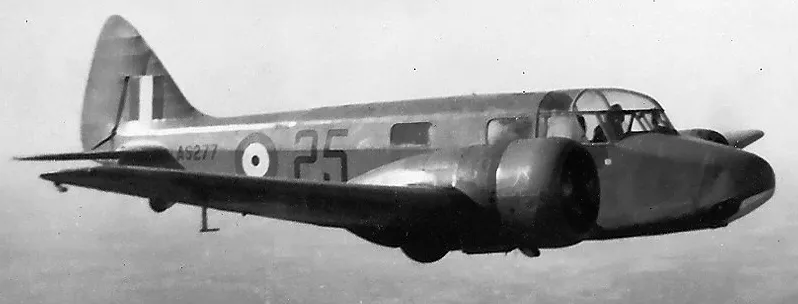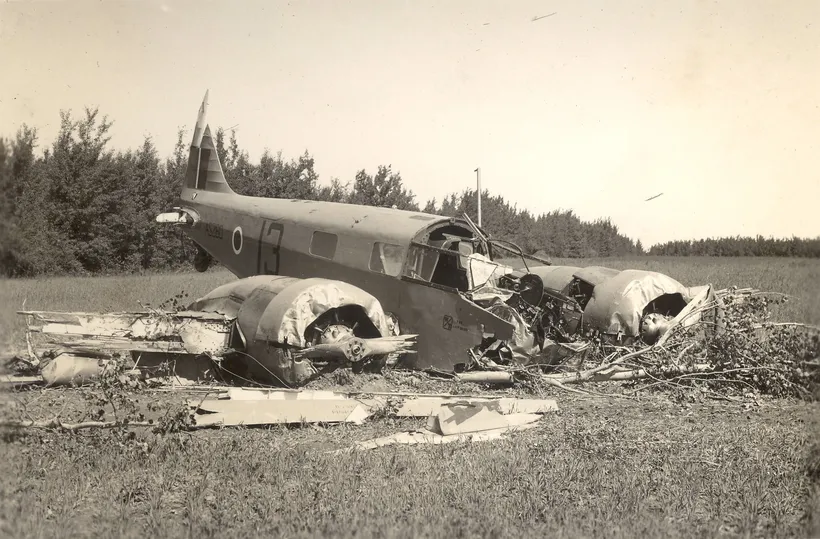Stevens, Ralph Arnold (Leading Aircraftman)
Killed in Flying Accident 1942-March-10


Birth Date: 1921
Born:
Parents: Son of Arnold and Dorothy Daisy Stevens, of Marston Green, Warwickshire, England.
Spouse:
Home:
Enlistment:
Enlistment Date: unkown date
Service
RAFVR
Unit
36 SFTS- Service Flying Training School (RAF)
Base
Penhold, Alberta, Canada
Rank
Leading Aircraftman
Position
Service Numbers
1197657
Crew or Other Personnel
Oxford AR972
Oxford serial: AR972

Airspeed A.S. 10 Oxford Mk. II, RCAF (Serial No. AS277), 25, in flight over Saskatchewan, 1942.
The Airspeed AS.10 Oxford was a twin-engine monoplane aircraft developed and manufactured by Airspeed. It saw widespread use for training British Commonwealth aircrews in navigation, radio-operating, bombing and gunnery roles throughout the Second World War.
The Oxford was developed by Airspeed during the 1930s in response to a requirement for a capable trainer aircraft that conformed with Specification T.23/36, which had been issued by the British Air Ministry. Its basic design is derived from the company's earlier AS.6 Envoy, a commercial passenger aircraft. Performing its maiden flight on 19 June 1937, it was quickly put into production as part of a rapid expansion of the Royal Air Force (RAF) in anticipation of a large-scale conflict.
As a consequence of the outbreak of war, many thousands of Oxfords were ordered by Britain and its allies, including Australia, Canada, France, New Zealand, Poland, and the United States. Following the end of the conflict, the Oxford continued to achieve export sales for some time, equipping the newly formed air forces of Egypt, India, Israel, and Yugoslavia. It was considered to be a capable trainer aircraft throughout the conflict, as well as being used a general-purpose type. A large number of Oxfords have been preserved on static display. Wikipedia
Unit Desciption
36 SFTS (36 Service Flying Training School)
Graduates of the EFTS "learn-to-fly" program went on a Service Flying Training School (SFTS) for 16 weeks. For the first 8 weeks the trainee was part of an intermediate training squadron; for the next 6 weeks an advanced training squadron and for the final 2 weeks training was conducted at a Bombing & Gunnery School. The Service schools were military establishments run by the RCAF or the RAF.
There were two different types of Service Flying Training Schools. Trainees in the fighter pilot stream went to an SFTS like No. 14 Aylmer, where they trained in the North American Harvard or North American Yale. Trainees in the bomber, coastal or transport pilot stream went to an SFTS like No. 5 Brantford where they learned multi-engine technique in an Airspeed Oxford, Avro Anson or Cessna Crane.

For Information on RCAF Station Penhold see here



 Harvard Historical Aviation Society
Harvard Historical Aviation Society
 Midland Aircraft Recovery Group - Men Of 36 SFTS
Midland Aircraft Recovery Group - Men Of 36 SFTS
 Bomber Command Museum Of Canada - 36 SFTS
Bomber Command Museum Of Canada - 36 SFTS
 Red Deer Cemetery
Red Deer Cemetery School Daily Diary Entry - 1942-03-10
School Daily Diary Entry - 1942-03-10 Commonwealth War Graves Commission
Commonwealth War Graves Commission www.findagrave.com
www.findagrave.com Library and Archives Canada Service Files (may not exist)
Library and Archives Canada Service Files (may not exist) Oxford Trainer
Oxford Trainer Wikipedia Oxford Trainer
Wikipedia Oxford Trainer